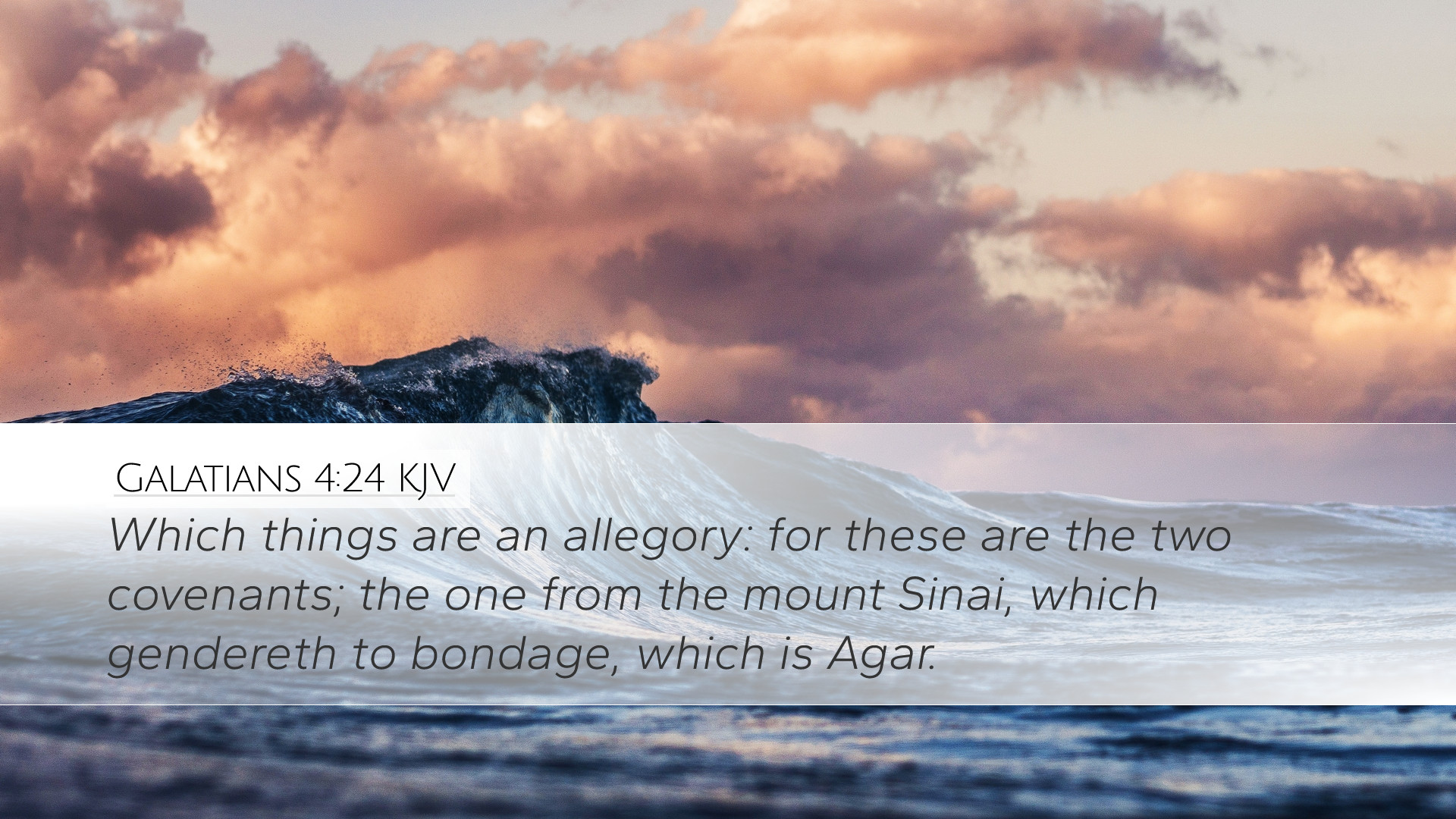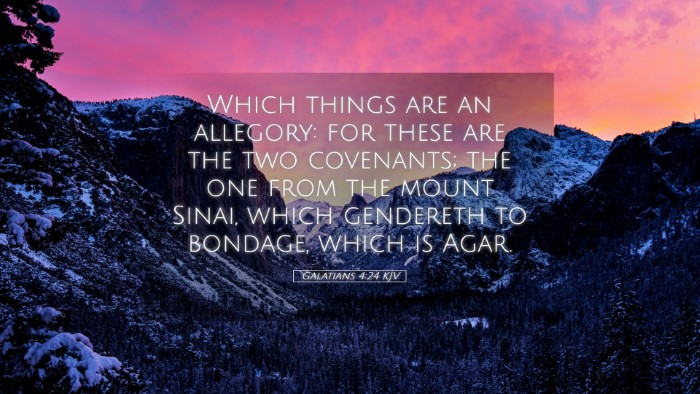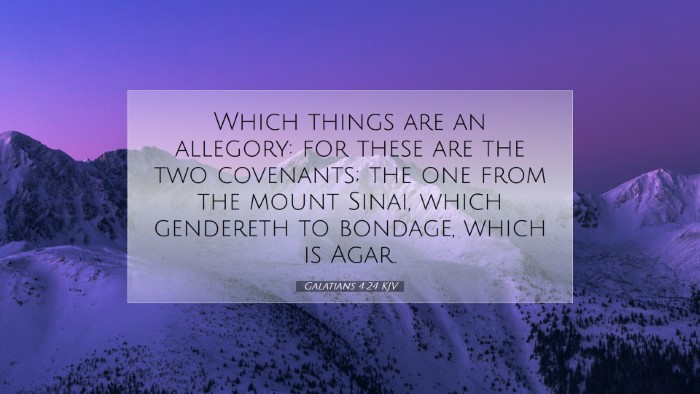Commentary on Galatians 4:24
Verse Context: Galatians 4:24 presents a critical examination of the allegorical representations found in the stories of Abraham's two sons, Isaac and Ishmael. The Apostle Paul utilizes this allegory to illustrate the contrasts between the covenant of grace and the covenant of the law.
Summary of Interpretations
This verse serves as a pivotal point in the epistle. Paul argues that the two women, Hagar and Sarah, represent two distinct covenants: one from Mount Sinai (the law) and one from the promise (grace). This allegory effectively conveys the theological implications of living under the law versus living under grace.
Exegesis and Theological Insights
Matthew Henry's Commentary:
- Henry emphasizes the moral and spiritual implications of Paul’s allegory. He states that Hagar represents the earthly Jerusalem, bound by the law, while Sarah represents the heavenly Jerusalem, characterized by freedom and grace.
- He draws attention to the fact that those who adhere to the law are in bondage, while those who are born of the promise, like Isaac, enjoy the blessings of grace and spiritual freedom.
- Henry's insight points towards the broader theme of Christian liberty found throughout the New Testament. He reminds believers that true freedom comes not through adherence to the law, but through faith in Jesus Christ.
Albert Barnes' Commentary:
- Barnes expands on the historical context of this verse, explaining that Paul is addressing the Judaizers who were imposing the law upon Gentile converts. He highlights how Paul’s argument is grounded in the use of their own scriptures to refute their claims.
- According to Barnes, the allegory serves to reinforce the idea that the Old Covenant is obsolete, and believers are now heirs of the promise through Christ. He stresses the enduring significance of being “free” in Christ, as opposed to living under the constraints of the law.
- Furthermore, he discusses how the relationship between Hagar and Sarah foreshadows the differing outcomes of reliance on human effort versus divine promise, encouraging believers to trust in God's faithfulness.
Adam Clarke's Commentary:
- Clarke provides a detailed analysis of the allegorical significance of Hagar and Sarah, noting their offspring as representative of two kinds of people—those who attempt to achieve righteousness through works and those who accept the gift of grace.
- He contemplates the wounds of legalism, suggesting that reliance on the law leads to spiritual poverty, whereas faith in the promises of God fosters growth and abundance in the life of a believer.
- Clarke also connects this allegory to the broader theme of the New Testament that emphasizes spiritual rebirth and transformation through the Holy Spirit, which transcends the limitations of the law.
Practical Applications for Modern Believers
The insights from these commentaries adapt well into a modern context where legalism remains a struggle within various ecclesiastical settings. The following points may serve as applications for pastors, students, and theologians:
- Understanding Freedom in Christ: Embrace the differences between living under grace versus the law. Encourage congregants to find their identity in Christ rather than performance-based acceptance.
- Addressing Legalism: Foster discussions in church communities about the subtle ways in which legalistic mindsets manifest and how they can lead to spiritual stagnation.
- Fostering Grace-Centered Relationships: Promote a culture of grace that uplifts and encourages one another in faith journeys instead of scrutinizing adherence to rules.
Conclusion
Galatians 4:24 challenges believers to discern between two foundational approaches to faith: one that is rooted in human endeavor and another grounded in divine promise. The insights from historical commentaries provide a rich understanding of this scripture, encouraging faith communities to embrace their identity as children of the promise, called to live in the freedom afforded by grace.


